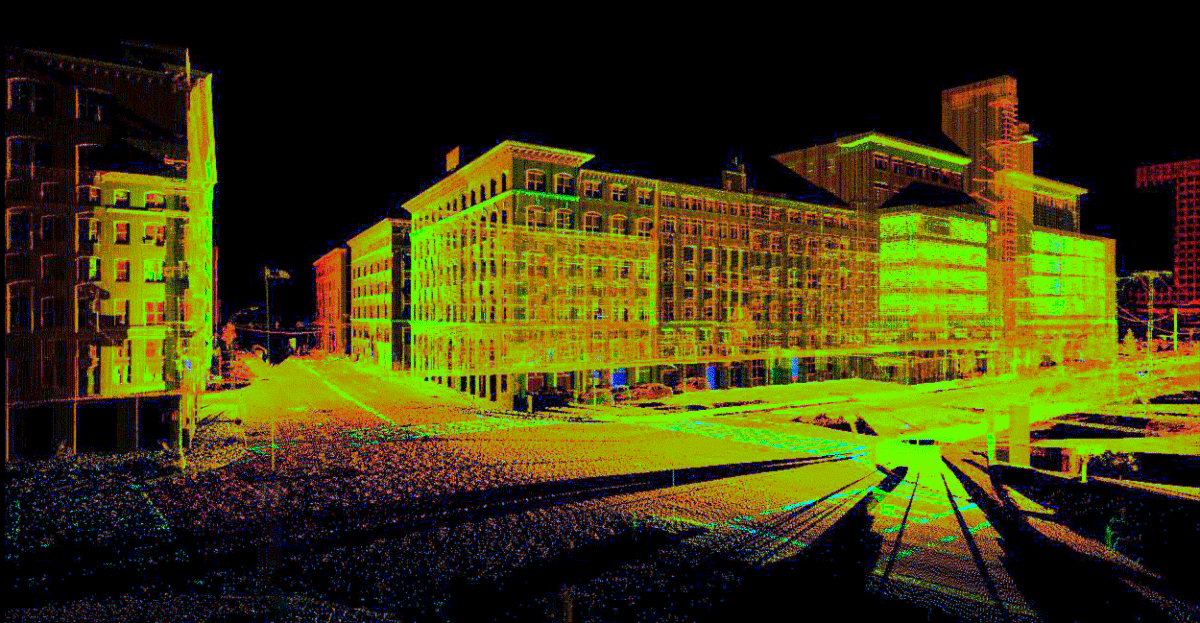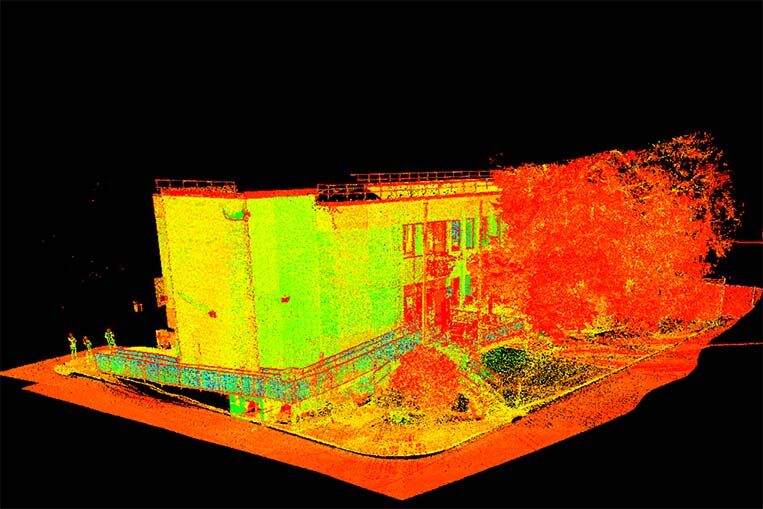Exploring the Applications of 3D Laser Scanning in Archaeology and Cultural Heritage Preservation
The assimilation of 3D laser scanning technology in archaeology and cultural heritage conservation notes a substantial development in just how historic sites and artifacts are documented and examined. This non-invasive technique provides precise spatial information, disclosing intricate details that were formerly tough to record. As the applications of this modern technology continue to develop, different implications for education and learning, conservation, and documentation arise, welcoming further expedition right into its transformative effect on the field.
Understanding 3D Laser Scanning Technology
3D laser scanning innovation has actually reinvented the area of archaeology by supplying accurate and in-depth spatial information. This advanced modern technology uses laser beam of lights to record millions of information points from a things or site, creating an extremely precise three-dimensional depiction (3D Scanning). The resulting point clouds can reveal complex details of archaeological websites, frameworks, and artefacts that could be invisible to the naked eye
Using this modern technology, excavators can document the exact measurements, shapes, and settings of things with extraordinary accuracy. This technique lessens the threat of human error and removes the need for considerable manual dimensions. The data accumulated can be examined and shared conveniently, facilitating partnership amongst scientists. By incorporating 3D laser scanning with GIS and various other electronic devices, excavators enhance their ability to visualize and analyze historical contexts, causing much deeper understandings right into ancient societies and atmospheres.
Enhancing Historical Paperwork
3D laser scanning significantly improves historical paperwork through its capability to develop exact website maps. This technology helps with in-depth artifact analysis, giving understandings that typical techniques may neglect. On top of that, it ensures the preservation of contextual data, which is crucial for recognizing the relationships within archaeological sites.
Exact Website Mapping
While conventional mapping techniques often battle with capturing the detailed details of historical sites, advanced laser scanning modern technology offers an innovative strategy to accurate site mapping. This approach allows excavators to produce extremely detailed and precise three-dimensional depictions of sites, showcasing topographical variants and architectural features with impressive integrity. The ability to record numerous data factors in a matter of mins permits for comprehensive documents, which can be easily updated and shared among scientists. Furthermore, laser scanning facilitates the dimension of intricate geometries that would be tough to evaluate utilizing traditional tools. Because of this, this modern technology boosts the accuracy of site maps, adding considerably to the preservation and understanding of cultural heritage sources.
Thorough Artefact Evaluation
Laser scanning modern technology substantially boosts the evaluation of archaeological artifacts, giving scientists with unprecedented detail and precision. This method records complex surface appearances, dimensions, and includes that typical documentation techniques might ignore. By generating high-resolution 3D models, scholars can very closely check out artifacts without the danger of damage integral in physical handling. This precision permits better relative researches, making it possible for professionals to recognize manufacturing methods, stylistic variations, and possible social importance. The capacity to control and visualize data in 3 dimensions assists in a much deeper understanding of artifact functionality and use. On the whole, laser scanning fosters an extra comprehensive technique to archaeological documents, ensuring that important info concerning artefacts is protected for future study and education.
Preservation of Contextual Data
Protecting contextual information is necessary for improving historical documents, as it assures that searchings for are understood within their original ecological and cultural frameworks. 3D laser scanning innovation greatly contributes to this conservation initiative by catching detailed spatial relationships amongst artefacts, frameworks, and their settings. By creating exact 3D models, archaeologists can document the specific places and orientations of things in situ, promoting an extensive understanding of their context. This innovation enables scientists to review and examine websites long after excavation, preserving the stability of contextual info. In addition, electronic records produced via scanning can be shared globally, promoting collective study and public engagement. Eventually, maintaining contextual information with 3D laser scanning enhances archaeological narratives and advertises an extra profound recognition of cultural heritage.
Conservation of Cultural Heritage Sites
As advancements in modern technology proceed to progress, the conservation of cultural heritage websites has actually come to be significantly dependent on cutting-edge approaches such as 3D laser scanning. This innovation permits the thorough documents of landscapes, frameworks, and artifacts, recording their exact dimensions and spatial partnerships in a non-invasive fashion. By producing high-resolution 3D designs, scientists can examine and keep track of degeneration patterns, allowing aggressive conservation techniques.
In addition, 3D laser scanning promotes the sharing of comprehensive site information with the global area, promoting partnership among preservationists, archaeologists, and historians. These models my review here function as invaluable resources for education and public her latest blog involvement, increasing recognition of social heritage concerns. Furthermore, the digital records created can safeguard against loss because of environmental aspects, vandalism, or disregard. On the whole, 3D laser scanning represents a transformative strategy to the preservation of cultural heritage, ensuring that these sites can be examined and valued by future generations.

Remediation and Reconstruction Efforts
The comprehensive documents achieved via 3D laser scanning plays a substantial function in repair and reconstruction efforts within archaeology. This innovation provides exact dimensions and high-resolution imagery, permitting for exact electronic designs of artifacts and frameworks. These versions act as important references during reconstruction processes, enabling excavators to visualize the original layout and make informed decisions concerning products and strategies required for repair service.
3D laser scanning helps with the restoration of damaged or lost elements by producing detailed replicas. This process aids in making certain that repairs preserve historical stability while also enabling innovative methods to recover sites. The capacity to evaluate wear patterns and structural weaknesses with scanned data improves understanding of a site's historic context and its use gradually. Subsequently, 3D laser scanning not only protects the physical facets of cultural heritage however additionally enriches the narrative of background, leading future restoration undertakings.
Educational and Research Opportunities
The integration of 3D laser scanning in archaeology opens up considerable educational and research opportunities. Academic collaborations can improve the understanding of ancient sites, while specialized training workshops equip professionals with important abilities for utilizing this technology. Together, these campaigns promote a richer involvement with archaeological practices and techniques.
Academic Collaborations in Archaeology
Collaborative efforts in archaeology have become significantly crucial for progressing both instructional and research study chances. By cultivating collaborations amongst colleges, study institutions, and social heritage companies, these partnerships assist in the exchange of understanding and resources, improving the high quality of historical studies. Joint jobs commonly utilize varied proficiency, enabling thorough analyses and cutting-edge methodologies, especially in the application of modern technologies like 3D laser scanning. Such partnerships likewise promote you can check here interdisciplinary techniques, involving areas such as geography, conservation, and history science. Furthermore, scholastic partnerships commonly bring about the advancement of brand-new educational programs and training programs, preparing the future generation of archaeologists to properly use sophisticated technologies in their job. Ultimately, these partnerships add to the conservation and understanding of social heritage.
Educating Workshops for Experts
Training workshops for experts in archaeology are increasingly important for improving abilities in the application of sophisticated innovations such as 3D laser scanning. These workshops give participants with hands-on experience in making use of advanced devices and software, cultivating a deeper understanding of data capture and evaluation processes. Professionals can learn to develop exact electronic versions of archaeological sites, which markedly aid in documentation and conservation initiatives. Additionally, these training sessions typically consist of conversations on best techniques and situation researches, advertising knowledge exchange amongst participants. By buying continual education, professionals can stay upgraded on progressing innovations, eventually improving the effectiveness of their study and cultural heritage preservation efforts. This dedication to skill improvement is essential for progressing the field of archaeology.
Future Trends in 3D Laser Scanning for Archaeology
As innovations in modern technology remain to improve numerous areas, the future of 3D laser scanning in archaeology guarantees to enhance both the precision and performance of site paperwork and evaluation. Arising patterns suggest an expanding assimilation of fabricated knowledge and device learning, promoting automated information handling and analysis. This development will certainly enable excavators to analyze complex datasets more rapidly, causing faster insights right into historical contexts.
The integration of drone innovation with 3D laser scanning is most likely to increase, allowing extensive airborne studies of historical sites that are difficult to accessibility. The boosting price of scanning equipment will certainly democratize accessibility, equipping smaller establishments and independent researchers to use these devices successfully. Additionally, innovations in virtual fact and increased truth will certainly allow immersive experiences for public engagement and education and learning, making historical searchings for a lot more accessible and interactive. These trends jointly signify a transformative future for archaeology, improving preservation initiatives and expanding the technique's outreach.
Regularly Asked Inquiries
How Much Does 3D Laser Scanning Equipment Cost?

What Are the Limitations of 3D Laser Scanning?
The restrictions of 3D laser scanning consist of high expenses, prospective information handling challenges, sensitivity to ecological problems, and difficulty catching detailed information in complex surfaces, which can affect the accuracy and completeness of checked depictions. (3D Scanning)

Can 3D Laser Scanning Be Utilized Undersea?
Yes, 3D laser scanning can be used undersea, however it requires specialized devices and methods to overcome obstacles such as water distortion and limited visibility. Effective applications have actually been demonstrated in aquatic archaeology and undersea studies.
For how long Does a Scanning Project Typically Take?
A scanning project normally takes anywhere from a couple of days to a number of weeks, depending upon the complexity and dimension of the area being scanned, together with the prep work and post-processing needs associated with the job.
Exist Particular Software Needs for Processing 3D Scans?
Yes, specific software requirements for refining 3D scans include programs with the ability of managing big point clouds, such as Autodesk Wrap-up, Cyclone, or MeshLab. These devices help with evaluation, visualization, and combination right into various applications efficiently.
The integration of 3D laser scanning technology in archaeology and cultural heritage preservation marks a substantial improvement in just how historical sites and artifacts are recorded and examined. 3D laser scanning innovation has transformed the area of archaeology by supplying specific and comprehensive spatial information. As developments in modern technology continue to evolve, the conservation of social heritage websites has ended up being progressively reliant on cutting-edge techniques such as 3D laser scanning. As developments in innovation continue to reshape various areas, the future of 3D laser scanning in archaeology assures to improve both the precision and effectiveness of website documents and analysis. The assimilation of drone innovation with 3D laser scanning is likely to broaden, allowing complete aerial surveys of archaeological websites that are challenging to gain access to.